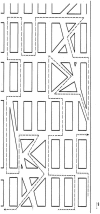Neurological soft signs in individuals with pathological gambling
- PMID: 23593341
- PMCID: PMC3617209
- DOI: 10.1371/journal.pone.0060885
Neurological soft signs in individuals with pathological gambling
Abstract
Increased neurological soft signs (NSSs) have been found in a number of neuropsychiatric syndromes, including chemical addiction. The present study examined NSSs related to perceptual-motor and visuospatial processing in a behavioral addiction viz., pathological gambling (PG). As compared to mentally healthy individuals, pathological gamblers displayed significantly poorer ability to copy two- and three-dimensional figures, to recognize objects against a background noise, and to orient in space on a road-map test. Results indicated that PG is associated with subtle cerebral cortical abnormalities. Further prospective clinical research is needed to address the NSSs' origin and chronology (e.g., predate or follow the development of PG) as well as their response to therapeutic interventions and/or their ability to predict such a response.
Conflict of interest statement
Figures



References
-
- Welte JW, Wieczorek WF, Barnes GM, Tidwell MC, Hoffman JH (2004) The relationship of ecological and geographic factors to gambling behavior and pathology. J Gambl Stud 20 4: 405–23. - PubMed
-
- Gerstein DR, Murphy SA, Toce MT, Hoffmann J, Palmer A, et al... (1999) Gambling impact and behavior study: Report to the National Gambling Impact Study Commission. Chicago, National Opinion Research Center at the University of Chicago.
-
- Potenza MN, Kosten TR, Rounsaville BJ (2001) Pathological gambling. JAMA 286 2: 141–4. - PubMed
-
- Shaffer HJ (1997) The most important unresolved issue in the addictions: conceptual chaos. Subst Use Misuse 32 11: 1573–80. - PubMed
Publication types
MeSH terms
Grants and funding
LinkOut - more resources
Full Text Sources
Other Literature Sources
Medical
Research Materials

